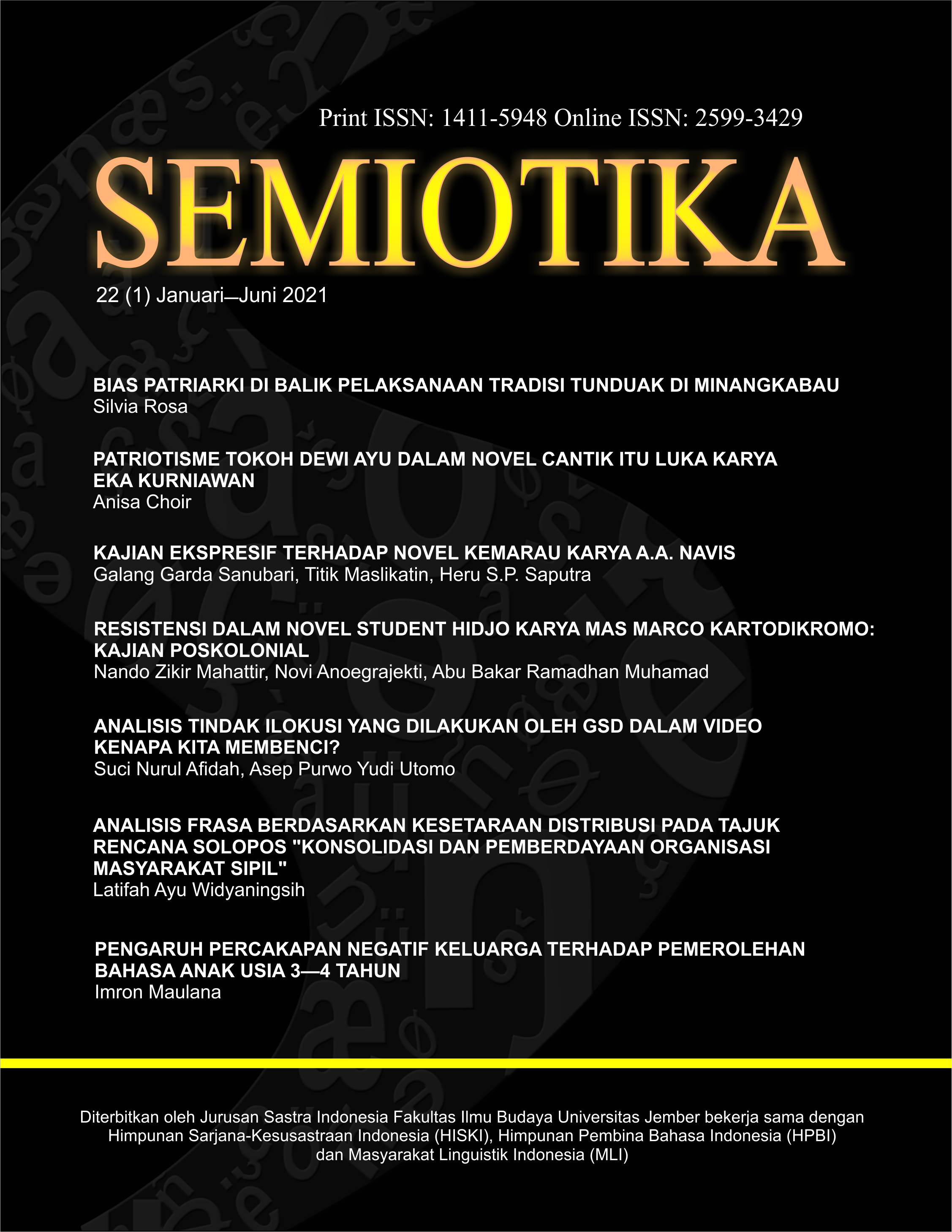PENGARUH PERCAKAPAN NEGATIF KELUARGA TERHADAP PEMEROLEHAN BAHASA ANAK USIA 3—4 TAHUN
DOI:
https://doi.org/10.19184/semiotika.v22i1.21382Keywords:
harsh Sundanese language, imitation, language acquisition, negative conversationAbstract
The effect of negative conversation occurs intensively in children aged 3-4 years because it is a period of imitation. This period is one of the stages of socialization that a child gets within his family's scope. This study aims to comprehensively examine the negative conversations that affect language acquisition, especially phonological acquisition, mainly acquiring vowels that occur in SM and NS. The research method used is a qualitative descriptive method. The study results revealed that negative conversation significantly affected children's language acquisition and its characteristics. The concrete reality at this stage, especially when the family says anything, then gradually the child brain area will process it. The child will repeat it. This phenomenon occurs repeatedly, and then it is not imagined that he will speak these words spontaneously. A child tends to say it without understanding the meaning. Still, it will affect his character if the negative sentences internalized to his thought. Adopting this negative conversation tends to have unideal characteristics because a child does not imitate his negative words. Still, he tries to understand the meaning uttered by the person closest to him. In this case, the study results reveal that negative conversations significantly affect children's language acquisition and affect their characteristics. The conclusion is that language acquisition through an unfavourable exchange is obtained by internal (family) factors and external factors.
Downloads
Downloads
Published
Issue
Section
License
SEMIOTIKA has CC-BY-SA or an equivalent license as the optimal license for the publication, distribution, use, and reuse of scholarly work. Authors who publish with this journal retain copyright and grant the journal right of first publication with the work simultaneously licensed under a Creative Commons Attribution-ShareAlike 4.0 International License that allows others to share the work with an acknowledgment of the work's authorship and initial publication in this journal.
Attribution-ShareAlike
CC BY-SA


